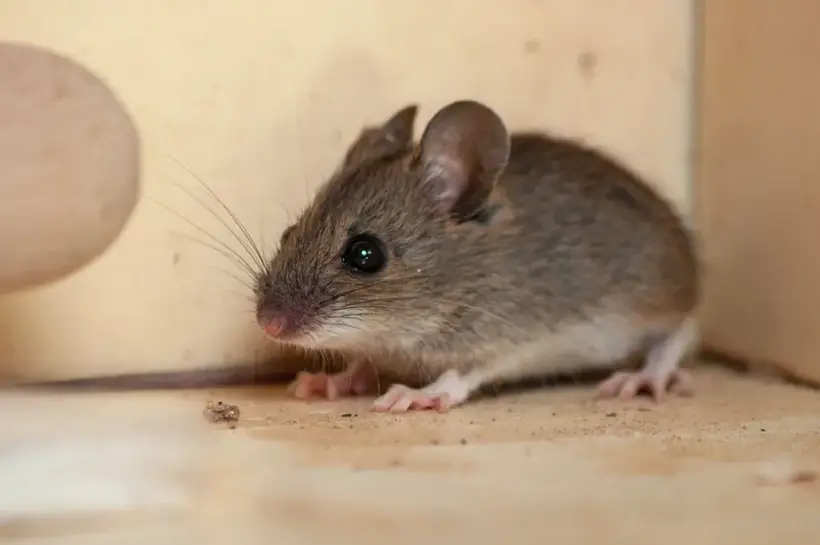Exploring the Habits of Mice: Do They Usually Go Upstairs?
Mice are a significant issue for homeowners when it comes to dealing with household pests. They are small and agile, but they can create damage and cause health problems if not handled properly. Therefore, learning about their behavior can help you avoid mouse infestations in your home and living area.
So, people often question, do mice usually go upstairs? No, not usually, but mice are skilled climbers who can traverse through pipes and walls to reach higher levels. Although they prefer to inhabit lower regions of buildings, mice may go upstairs for food, shelter, and nesting areas.
In this article, we will discuss the behavior patterns of mice and whether they tend to go upstairs. So, keep reading!
Mice Behavior: Do Mice Usually Go Upstairs?
No. They usually prefer to live in lower-level habitats like lawns, basements, garages, and drainage systems.

However, mice are adaptable creatures that can easily move across various types of surfaces, including:
- Stairs
- Rods
- Ladders
- Communication cables
- Vertical stainless steel
- Rough concrete walls
- Air conditioning ducts
- Damaged drain covers
- Plumbing
- Chimneys
- Gas lines
- Fire sprinklers
- Studies have indicated that house mice in tropical Asia typically inhabit only within buildings.
- Based on a study, the presence of house-mouse was more frequent in the lower three levels of high-rise apartment buildings than on their upper floors.
- However, they occasionally go upstairs to seek shelter, food, and a location to build their nests.
- According to research, young and old house mice have a greater inclination to climb to higher levels than mound-building mice.
- As per the study, mouse species that inhabit forested areas, such as deer mouse or cottonwood mouse, have better climbing skills than the mice living in flat regions.
- Additionally, the longer tail of forest mice also appears to give them an added advantage while climbing to upper floors.
What Factors Encourage Mice to Go Upstairs?
Mice are creatures that can easily climb walls and jump to surfaces that are at least six feet high. Below we have listed some reasons why mice might go upstairs:

Easy Access
Mice have flexible bodies which allows them to fit through very tiny openings. They can get into upstairs apartments by squeezing through small gaps located around windows, doors, plumbing, and wiring.
Availability of Water
According to experts, mice require access to clean, fresh water to live. They may use leaky pipes, standing water, or dripping faucets to obtain water in residential areas.
Presence of Urinary Scent Marks
Studies have revealed that mice use urinary scent marks to navigate and interact with other mice in their environment. The scent marks can convey vital information about factors like territorial authority, health, and social status.
If there are mice in your building, their scent of urine and droppings can attract other mice to the area, including the upper floors.
Availability of Food
Mice are drawn to food sources and can eat most kinds of food like crumbs, cereals, pet food, and garbage. If your neighbors leave food uncovered or have trash cans with poor seals, this can lure mice into your building.

Optimal Nesting Site
Mice usually look for private and secure places to create nests and care for their offspring. Indoor mice can construct their nests in any sheltered place, as per research. If there are suitable sites for nesting upstairs, like unused rooms, attics, or crawl spaces, mice may utilize those areas to create their homes.
No Disturbance
Mice tend to prefer areas that are calm and not frequently visited by people or predators. If the upper floors of your building are relatively quiet and less frequently visited, it is highly likely that mice may feel safe and at ease to roam around or inhibit those areas of your home.
Environmental Changes
Mice populations can be affected by changes in their surroundings. For instance, if there is an unexpected disturbance in their natural environment or food sources, they may be motivated to look for better living conditions, including the upper floors of your building.
What Are The Typical Signs Of Mice Activity In Upper Floors?
We have provided a table below that enlists the common signs of mice activity on upper floors and the recommended actions to take when you observe these signs.

| Signs of Mice Activity | Explanation | What to Do |
|---|---|---|
| Chewed food packaging | Containers with chew marks in upper floor pantries or storage areas may indicate mice activity | You should dispose of the contaminated food |
| Store food in airtight containers | ||
| Look for holes and seal them | ||
| Grease marks | Greasy smudges left by mice on upper walls or near entry points | Clean the greasy marks with a mild detergent |
| Footprints | Mice leave traces of their feet in areas that are dusty which can be found as small smudges on your upper floors | Follow the tracks to identify potential entry points |
| Block the entry points properly | ||
| Set up traps or contact a professional pest control service | ||
| Odor | If you catch a strong, musky odor in your home, it could mean that you have mice infestation | Identify the source of the odor |
| Clean and disinfect the area | ||
| Droppings | The presence of small cylindrical droppings in places like attics or crawl spaces | Wear gloves and dispose of droppings |
| Clean the area with disinfectant | ||
| Look for holes and seal them | ||
| Gnaw marks | The presence of fresh gnaw marks on wooden furniture, vinyl, plastic, fiberglass, electrical wiring, or other materials on your upper floors | You should repair or replace the damaged materials |
| Unusual noise | Hearing scratching or scurrying sounds during the night | Identify the source of the noise |
| Set up traps or use pesticides to capture and remove the mice | ||
| Presence of nesting material | Finding shredded materials like paper, fabric, straw and strings in hidden corners of your upper floors | Wear gloves and remove the nest using a sealed plastic bag. |
| Clean the area thoroughly | ||
| Block any holes or the entry points properly |
What Preventive Measures Should You Take To Keep Mice Away from Upstairs?
Below, we have listed some key preventive measures you should take to keep mice away from upstairs:

- You can use screens on windows and door sweeps or metal thresholds on the exterior doors. It is also recommended to keep these areas closed as much as possible to prevent mice from entering your home.
- You can use airtight containers made of glass or metal to store food items. This helps prevent mice from being attracted to the smell of food and keeps them away from your upper floors.
- Use appropriate materials such as caulk, steel wool, spray-in-place foam, or neoprene seals to seal gaps and cracks in walls and keep mice from getting in.
- You can use a vacuum cleaner, disinfectants, and natural repellents such as peppermint oil, cayenne pepper, and clove oil to clean the upper area of your house and keep mice away.
- You should keep trash cans away from the house to prevent mice from being drawn to the smell and going upstairs.
- Mice are drawn towards cluttered spaces as they offer hiding places and areas for nesting. Therefore, you should declutter and clean storage areas like attics and closets frequently.
- A study suggested that the use of targeted rodent Integrated Pest Management tactics is more likely to effectively eliminate house mouse infestations in a building. This also helps in reducing the risk of zoonotic diseases.
- Mice can climb up tree branches to access the upper floors of your house. To stop mice from entering your upper floors, trim the tree branches and bushes close to your home.
How Can You Effectively Remove Mice From Your Upper Floors?

If you want to permanently remove mice from the upper levels of your home, check out the table we have provided below. It contains a list of effective ways to eradicate mouse infestations.
| Effective Method | Explanation |
|---|---|
| Snap Traps | It is a traditional mouse trap that works by triggering a spring mechanism that snaps shut on the mouse |
| Glue Traps | Sticky traps that capture mice when they step onto the adhesive surface |
| Electronic Traps | These are battery-powered traps that electrocute mice when they enter the trap |
| Ultrasonic Mouse Repellents | Ultrasonic Mouse Repellents are devices that emit high-frequency sound waves to deter mice, as they find these sounds irritating and unpleasant |
| Peppermint Oil | Mice don’t like the smell of peppermint oil. To deter them, soak cotton balls in peppermint oil and place them in areas where they might enter |
| Natural Predators | Introducing natural predators like cats or dogs in the environment can help deter mice from entering your home |
| Pest Control Services | You should call pest control services to examine the situation and help you in getting rid of mice from the upper floors of your building |
FAQs
Check out the frequently asked questions provided below to learn more about whether or not mice typically go upstairs.
Q: Can mice pose any health risks to humans living on upper floors?
Mice can carry diseases and bacteria, such as Salmonella and Hantavirus, which can potentially be transmitted to humans. Therefore, removing mice from your house as soon as possible is essential.
Q: How often should I inspect the upper floors of my building for signs of mice?
It is recommended to inspect the upper floors of your building at least once a month for signs of mice, such as droppings, chew marks, or gnawed wiring.
Q: Should I use mouse traps to catch mice on the upper floors?
Yes, mouse traps can be used to catch mice on the upper floors of a building. However, it is important to use them carefully to avoid injuring yourself.
Final Words
In conclusion, mice can go to the upper levels of your building. However, it is critical to note that mice can climb almost any surface, including walls, pipes, and electrical wires, to reach higher levels of a building. If you suspect mice on the upper floors of your building, it is important to take action right away.
By sealing potential entry points, keeping the area clean, introducing natural predators and using preventive measures, you can help deter mice from entering the upper floors of your building. Remember, if the infestation is severe, it is best to contact pest control services to handle the situation.




